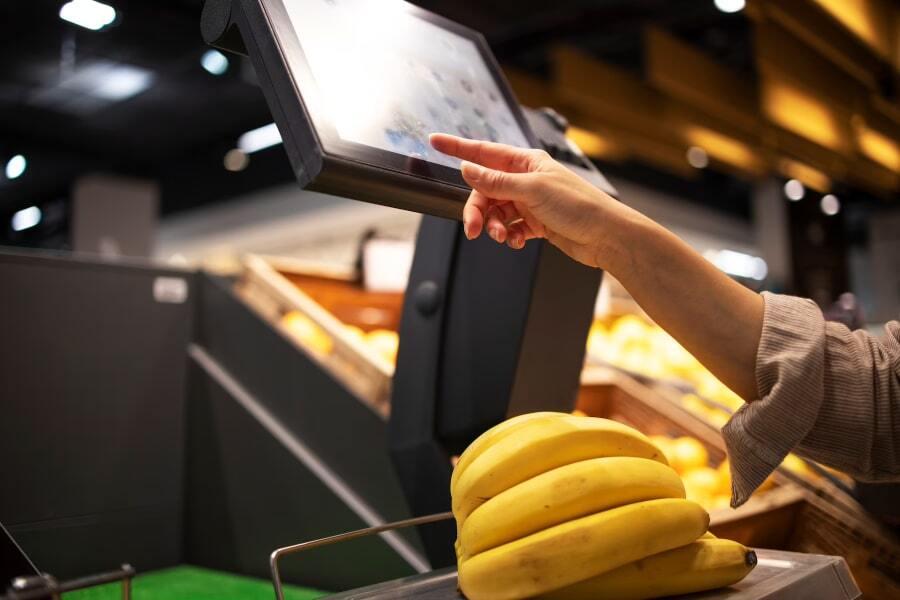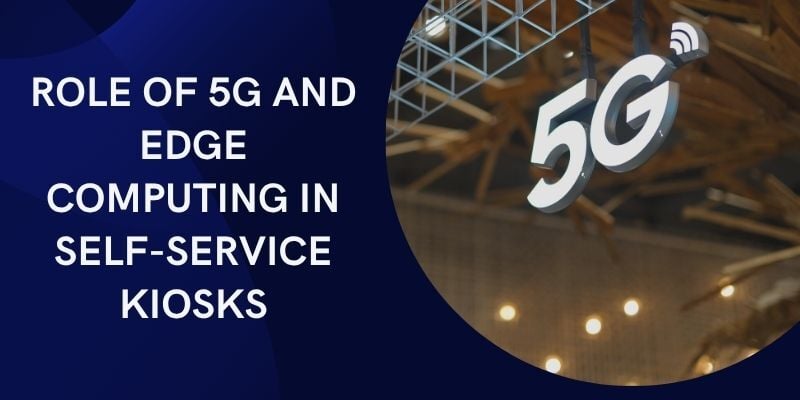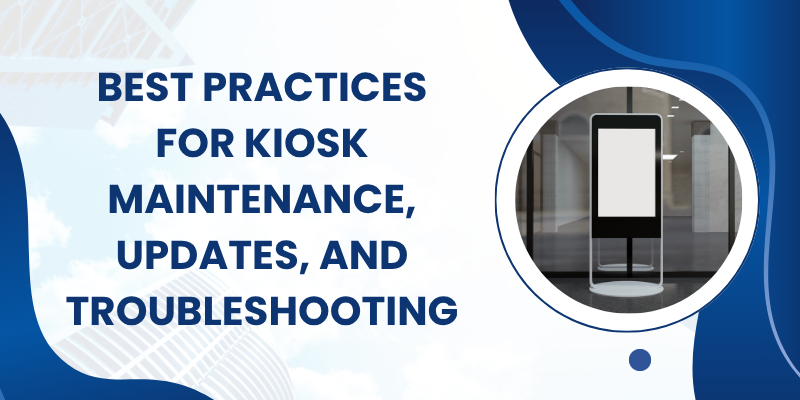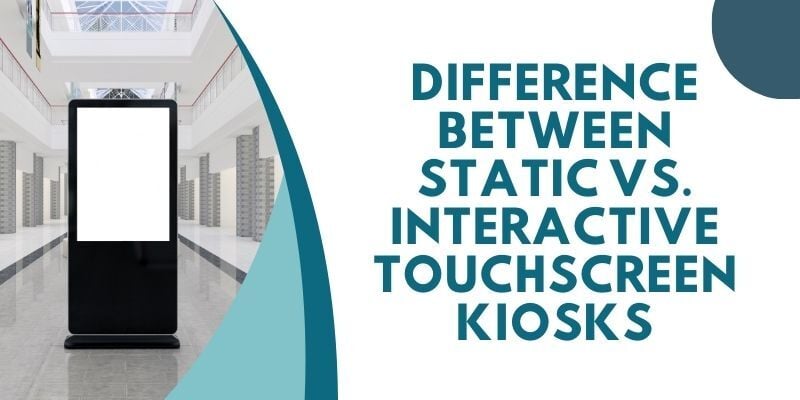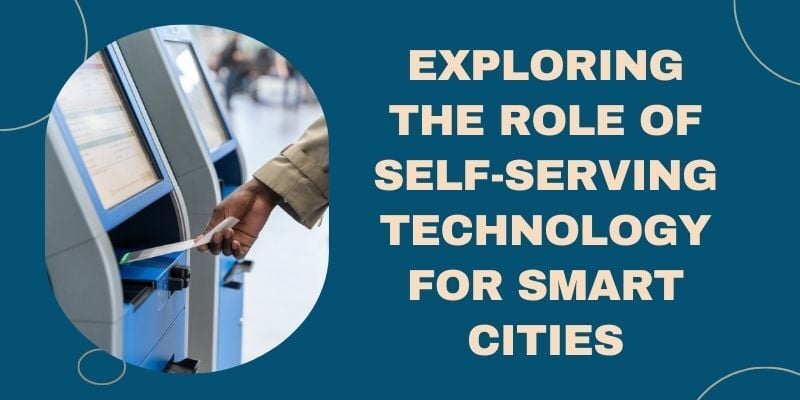Are you looking to improve your store’s efficiency and regulate crowds at checkout stations?
Self-checkout kiosks are not new to the retail industry but have become increasingly popular recently. According to Statista, the use of AI in retail stores was valued at USD 4.8 billion in 2021, which is expected to reach USD 31 billion by 2028.
When you walk into a store with kiosks, you may notice many offer products based on your purchase history. So, how is it done? Powered by artificial intelligence (AI), self-checkout systems have evolved to benefit retailers and customers.
If retail owners wish to remain competitive in the industry, understanding the importance of artificial intelligence in self-checkout systems is now a requirement.
In this article, we explore the importance of AI in self-checkout systems, understand its functioning and ability to enhance efficiency and prevent fraud.
Data source: Statista
The Role of Artificial Intelligence (AI) in Self-Checkout Systems
The growing popularity of self-checkout systems leaves us wondering what it is that is revolutionary in making checkout efficient for customers.
The answer lies in the power of Artificial Intelligence (AI). AI-powered systems in retail stores use algorithms to recognize products, update inventory levels in real-time and detect fraudulent activity.
For the customers, they monitor consumer behaviour and offer personalized recommendations based on the purchase history.
Since the pandemic in 2019, self-checkout systems have emerged as the mode of choice for contactless payments and queue management. Self-checkout kiosks are equipped with facial recognition, mobile payments, card readers and webcams, making it easy for customers to trust and use the system.
How AI Works in Self-Checkout Systems
Self-checkout systems use innovative technologies to allow automation and minimize contact in retail stores. Self-checkout kiosks have built-in cameras, sensors, and barcode readers to capture images of products as customers scan them.
Image recognition technology enables the system to recognize and verify the product to its corresponding code. This allows for real-time inventory level monitoring, insights into products that sell out quickly, and notifications to restock.
Since these are equipped with machine learning and artificial intelligence, algorithms in the self-checkout system recognize multiple products by analyzing vast amounts of data, improving accuracy in recognizing products and reducing errors in scanning.
Self-service kiosks in retail come with contactless payment options due to their integration with mobile apps for payments and facial recognition.
Other than being primary channels of point-of-sale systems for retail stores, self-checkout kiosks are seen as effective queue management systems.
A major global retailer, Walmart, has installed self-checkout systems powered by artificial intelligence (AI) in its stores. These systems utilize computer vision technology to identify scanned items, while machine learning algorithms constantly improve the system’s accuracy in personalizing recommendations.
AI and Fraud Detection
Despite the numerous benefits of self-service kiosks, the most concerning aspect is the fraudulent practice. Retailers are at constant risk of a security breach and theft, which will incur financial losses.
Self-checkout systems rely on customers to scan and bag items. Thus, individuals can easily steal items or manipulate the system. You must learn how the self-checkout system is deceived to eliminate fraudulent activity.
- Banana Trick – replace the item of higher price with the code from a cheaper item
- The Pass around – remove the item from the conveyor belt without scanning it
- The Switcheroo – peel the sticker from an inexpensive item and place it over the bar code of a pricey item while making sure that both items weigh the same
AI algorithms can detect fraud in self-checkout systems by analyzing customer behaviour and real-time transaction data. These systems can identify when a customer attempts to scan an item multiple times or removes an item from the basket without scanning it. They also detect when a customer manipulates the system by changing the item’s weight or using fake barcodes.
Retailers can prevent losses by denying the transaction or alerting security personnel. Retailers can also use transaction and inventory data to identify stolen items and flag suspicious transactions.
Many stores have introduced Smart Shopping Cars, which cannot leave the store. Customers must place items in a bag, and their movement is tracked around the store.
Customers can be required to sign in at the self-service kiosks before they make purchases. This can be done via mobile apps, scanning apps, or phone numbers. Hire staff members and station them around kiosks and gates to review and verify receipts.
AI and Data Analytics
Using AI-powered self-service kiosks gives retailers a marketing edge in the industry. Once a customer uses the kiosks and scans products, AI and the software gather data on consumer behaviour and purchasing patterns.
By analyzing transaction data, AI algorithms identify patterns in customer behaviour such as preferred products, purchase frequency, and average basket size and weight. Retailers can then use this data to make informed, data-driven decisions to improve customer experience.
Data from AI-powered kiosks allow for optimizing product placement, personalized promotions, and improving inventory management.
Tools such as customer relationship management give an insight into the consumer’s engagement with the company. Retailers can use AI to monitor customer traffic patterns in the stores, identify areas where congestion occurs, and optimise the store layout to regulate traffic flow.
Emerging Trends in AI and Self-Checkout Systems
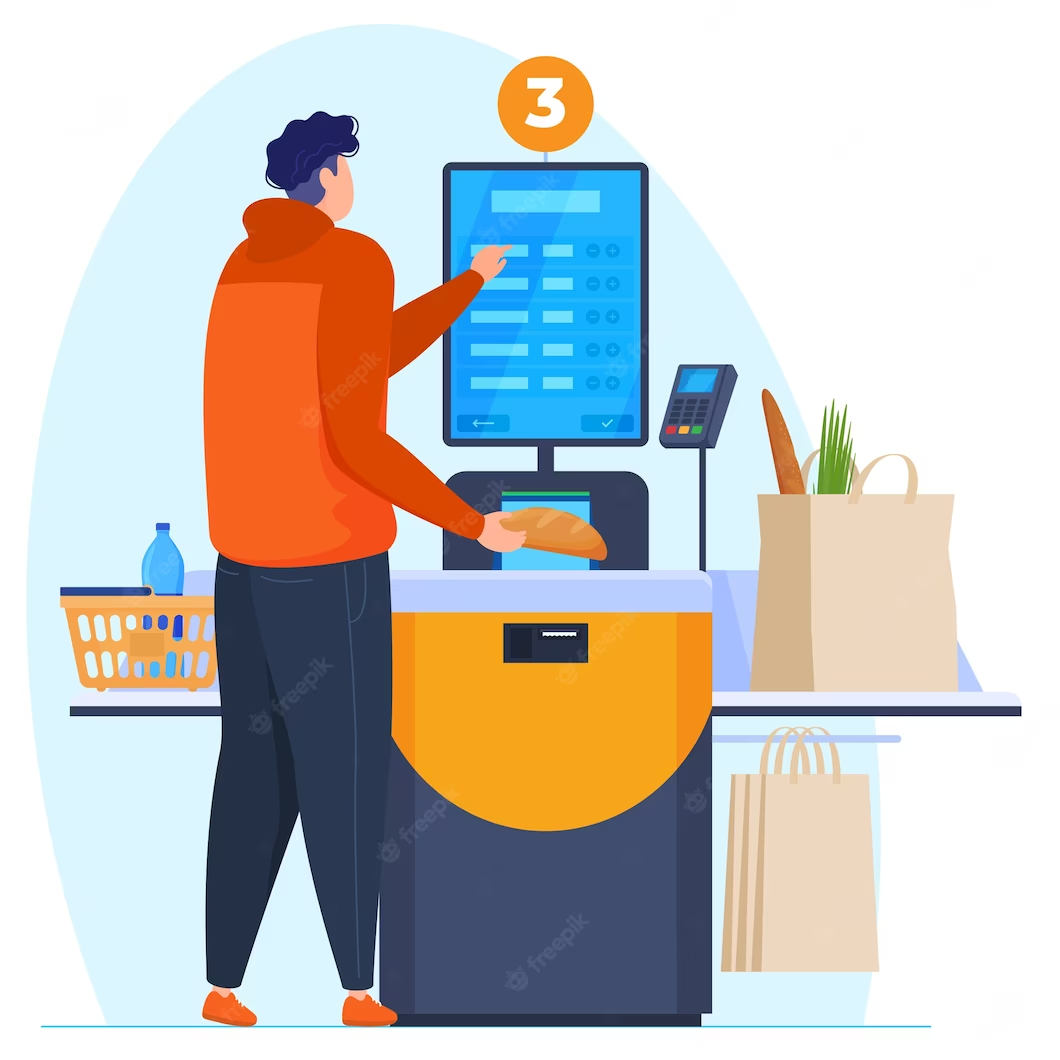
The global market of self-checkout is expected to expand by a CAGR (Compound Annual Growth Rate) of 11.6% between 2021 and 2026, according to Market Data Forecast. GenZ population prefers self-checkout systems, with an overwhelming 85% opting for kiosks.
Besides barcode readers and QR codes, the growth is owed to the innovations in AI-powered checkout kiosks. The latest addition to the kiosks is voice-activated systems, using natural language processing to enable customers to interact with the self-checkout system using their voice.
This has been game-changing for customers with difficulty using a touch screen. Voice recognition technology uses preloaded messages to respond to customers or processes speech based on customer interactions.
Similarly, the inclusion of mobile checkout allows customers to use their mobile devices to scan items as they shop and check out. AI-powered mobile checkout systems can use computer vision to recognize items. Given the ability to learn with every interaction, kiosks can offer complementary products and promotions and offer to checkout with the same products as in the purchase history. Customers can pay through mobile banking apps without carrying cash or credit cards.
Best Practices for Implementing AI in Self-Checkout Systems
Before implementing self-checkout kiosks in retail stores, you must consider critical points that benefit your business and customers. Let’s look at what they are:
- Run a cost-benefit analysis to evaluate the costs and benefits of implementing AI in self-checkout systems to ensure it is financially viable and a technology your customers will use.
- Check for technology compatibility with the existing infrastructure in the retail store, whether it is compatible with AI-powered self-checkout systems or requires expansion.
- Train your staff and customers thoroughly on operating the self-checkout system. This will reduce frustration and improve customer flow management in stores.
- Retailers should ensure that their self-checkout systems comply with data privacy regulations and are secure to prevent fraud. Obtain consent from customers before collecting personal information. Explain the usage of the collected data to customers to build trust.
- Install checkout kiosks that are easy to use, and offer multiple language options to ensure a seamless customer experience.
- Plan regular system maintenance checks, update software, and hire support to ensure that the self-checkout system is always running smoothly.
- Integrate self-checkout kiosks with an automated inventory management system, ensuring real-time inventory level updates. These are capable of self-ordering with the vendors, preventing an out-of-stock situation.
Frequently Asked Questions
What are the benefits of using AI in self-checkout systems for retailers?
The shift to self-checkout systems from conventional methods has been due to several benefits of AI-powered technology. The most notable advantages include improved data collection capabilities for targeted and personalized marketing campaigns and reduced labor costs. Customers enjoy decreased wait times in check-out lines and faster contactless transactions.
How can retailers ensure the successful implementation and adoption of AI-powered self-checkout systems?
Retailers should provide adequate training to staff and customers to successfully implement AI-powered self-checkout systems.
Simplify the checkout process with clear instructions and optimize the system’s performance. Offer incentives like discounts or rewards to encourage customers to use the system. Ensure self-checkout systems comply with data privacy regulations to protect customer data.
How does AI improve the customer experience at self-checkout systems?
Customers can benefit from AI-powered self-checkouts by speeding up transactions via contactless transactions. It offers a smooth retail experience by reducing wait times and minimizing crowds in-store.
Customers enjoy personalized product recommendations based on previous purchase history. Additionally, AI gives real-time updates on inventory levels to make the experience convenient.
Conclusion
Self-checkout kiosks use computer vision, machine learning, and other AI technologies to improve accuracy and prevent fraud.
Retail self-checkout kiosks analyze customer behavior for targeted marketing. Despite the risk of theft and fraud, the latest innovations in voice-activated and mobile checkout payments show that AI will continue to play a crucial role in the future of retail.
You know the benefits of sell-checkout kiosks outweigh the risks in the retail industry. So what are you waiting for?
Contact us today to install a self-service kiosk in your store!
BOOK A FREE DEMO
